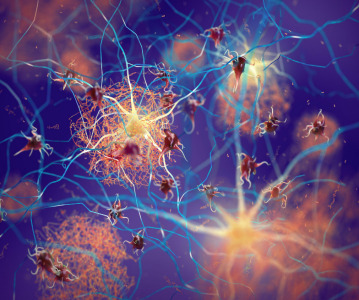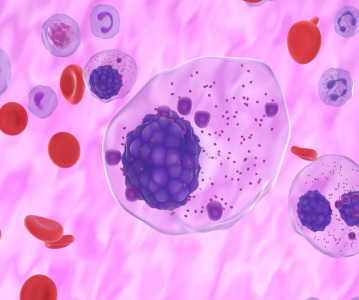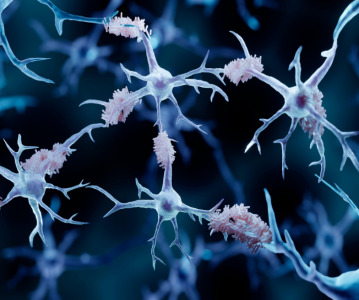NIH Programme Bridges Gap to Develop New Therapeutics

The National Institutes of Health has launched three pre-clinical projects to advance potential new treatments for acute radiation syndrome, brain injury following cardiac arrest and a rare blood disorder called beta thalassemia. The projects are part of the Bridging Interventional Development Gaps (BrIDGs) programme, which is funded by the NIH Common Fund and led by NIH’s National Center for Advancing Translational Sciences (NCATS).
BrIDGs provides eligible scientists with no-cost access to contractor services, such as toxicology studies, for pre-clinical therapeutic development. To be eligible for the programme, projects must have been effective in a disease model. Researchers often apply to BrIDGs because they have hit a roadblock and need additional expertise or lack other resources. Rather than funding successful applicants directly, BrIDGs supports expert NIH contractors who perform pre-clinical services for the researchers free-of-charge.
“BrIDGs researchers and partner scientists work together to bridge the gap between a basic discovery and clinical testing, thereby ensuring potential treatments have a chance to reach patients who need them,” said Christopher P. Austin, MD, NCATS director.
A primary goal of a BrIDGs project is the submission of an Investigational New Drug (IND) application to FDA to begin human clinical trials. To date, BrIDGs scientists have generated data to support 12 INDs submitted to FDA, as well as one clinical trial application to Health Canada. They also have evaluated 12 of the 13 projects in clinical trials. Three BrIDGs-supported therapeutic agents have gone as far as Phase II clinical trials, in which researchers provide an experimental therapy to a group of patients to evaluate its safety and effectiveness. Third-party investors have licensed seven compounds during or after their development through the BrIDGs programme.
BrIDGs scientists selected the following new projects from the 2013 application solicitation:
Acute Radiation Syndrome
Manufacturing of RLIP76-LyoPL for Acute Radiation Syndrome
Henry Hebel, MBA, vice president of drug development
Terapio Corp., Austin, Texas
Exposure to radiation, whether from a compromised nuclear reactor or a radiation weapon, can lead to acute radiation syndrome, a life-threatening multi-organ illness. Currently, there is no FDA-approved treatment for the syndrome. This project is designed to develop a treatment that can be administered beginning 24 hours or longer after radiation exposure. NIH’s National Institute of Allergy and Infectious Diseases is co-funding the pre-clinical studies for this project through its Radiation Nuclear Countermeasures Program.
Beta Thalassemia
The Development of Minihepcidins for the Treatment of Beta Thalassemia
Brian MacDonald, PhD, president and CEO
Merganser Biotech LLC, Newtown Square, Pa.
Patients with beta thalassemia, a rare inherited blood disorder, suffer from severe anemia and iron overload that can damage the heart. The disorder reduces production of hepcidin, the iron regulatory hormone. The goal of this project is to develop a treatment that increases levels of hepcidin and lowers the damaging effects of too much iron. NIH’s National Institute of Diabetes and Digestive and Kidney Diseases is co-funding this project.
Cardiac Arrest-Induced Acute Brain Injury
HBN-1 Regulated Hypothermia Formulation and Evaluation of Toxicity
Laurence Katz, MD, associate professor of emergency medicine
University of North Carolina at Chapel Hill
Patients resuscitated from cardiac arrest can suffer from acute brain injury. Lowering a patient’s body temperature into therapeutic-induced hypothermia can improve survival with good neurological outcomes in more than half of patients who remain in a coma after cardiac arrest. This project is designed to develop HBN-1 as an intravenous treatment that paramedics can give to cardiac arrest patients to induce hypothermia sooner. The NIH Common Fund is funding the pre-clinical studies for this project.
“Although each project is selected for its scientific merit, not all projects will lead to treatments because the pre-clinical phase of drug development is fraught with failures related to issues such as adverse side effects,” said John McKew, PhD, acting director of NCATS’ Division of Pre-clinical Innovation and chief of the Therapeutics Development Branch. “Still, the support that BrIDGs provides gives each project a fighting chance.”
Related News
-
News BioNTech to begin mRNA vaccine manufacturing in Rwanda by 2025
German biotechnology company BioNTech has stated their intentions to begin production at their mRNA vaccine factory in Rwanda by 2025, which will mark the first foreign mRNA vaccine manufacturing site on the continent of Africa. -
News Identifying Alzheimer’s Disease biomarker proteins with whole blood tests
A University of Manchester spin-out pharmaceutical company, PharmaKure, has reported successful study results for the quantification of Alzheimer’s Disease biomarker proteins with a whole blood test. -
News Bill & Melinda Gates Foundation to boost mRNA vaccine initiatives in Africa with USD $40m
To address vaccine inequality and accessibility issues, the Bill & Melinda Gates Foundation aims to deliver USD $40m to various biotech companies and vaccine manufacturers in support of mRNA vaccine development. -
News CPHI Podcast Series: Exploring neurological frontiers in Alzheimer's and beyond
The next episode of the CPHI Podcast Series delves into the science and background behind some recent developments in the field of Alzheimer's disease and neurological disorders. -
News Is patient centricity the future of pharmaceutical manufacturing?
In this interview with Sandra Sánchez y Oldenhage, President of PharmAdvice, she speaks to the importance of considering patients in the manufacturing stages of the pharmaceutical supply chain, and how it can redefine healthcare. -
News CPHI Podcast Series: How to leverage AI for Drug Discovery
Artificial intelligence is the topic of debate in the latest episode from the CPHI Podcast Series, where Digital Editor Lucy Chard speaks with Bill Whitford of DPS Group about the integration of AI in healthcare. -
News Pfizer forges ahead with blood cancer therapy after approval from FDA
Pfizer gains accelerated approval from the US FDA for their new bispecific antibody therapy for multiple myeloma, set to address an unmet need for patients. -
News Alzheimer's drug donanemab deemed effective in landmark clinical trial
Results from the TRAILBLAZER-ALZ 2 Randomised Clinical Trial into the use of donanemab to treat early symptoms of Alzheimer’s disease have been analysed.
Position your company at the heart of the global Pharma industry with a CPHI Online membership
-
Your products and solutions visible to thousands of visitors within the largest Pharma marketplace
-
Generate high-quality, engaged leads for your business, all year round
-
Promote your business as the industry’s thought-leader by hosting your reports, brochures and videos within your profile
-
Your company’s profile boosted at all participating CPHI events
-
An easy-to-use platform with a detailed dashboard showing your leads and performance







